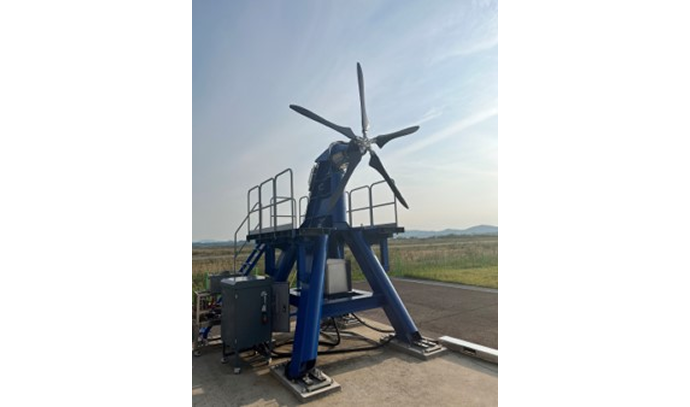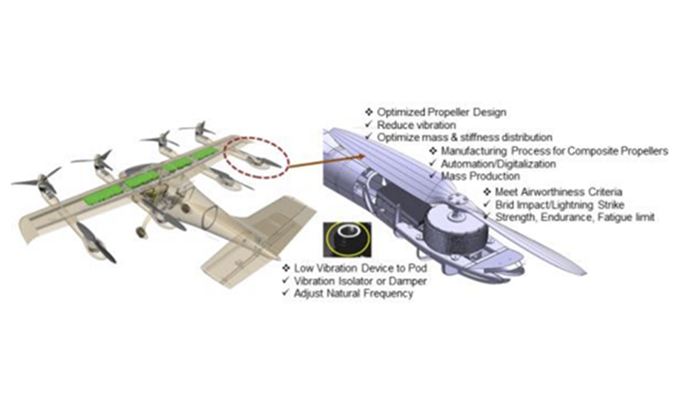

Development of core technologies for low-noise prop-rotor systems applicable to Advanced Air Mobility (AAM) vehicles
KARI has also conducted research on core technologies for low-noise prop-rotor systems applicable to Advanced Air Mobility (AAM) vehicles.
In particular, through the development project for a 64 dBA-class low-noise prop-rotor system, KARI pursued the design of prop-rotor configurations essential for urban operations and promoted localization of ultra-lightweight components using advanced domestic materials. The research targeted the development of low-noise, lightweight, and high-efficiency prop-rotors (including tilt propellers, tilt mechanisms, and lift propellers) suitable for electric propulsion systems on 4-to-5-seater urban mobility aircraft. The goal was to meet airworthiness standards equivalent to those defined in FAR Part 35.
Many AAM vehicles are designed with multiple propellers, where certain propellers tilt during forward flight while others remain stationary to optimize efficiency. Among these, the propellers used to generate lift during vertical takeoff and landing are referred to as lift props. These lift props are known to induce significant vibrations during the transition phase from hover to forward flight. KARI is designing high-performance lift props that reduce vibration through aerodynamic and structural optimization and is using high-precision analysis techniques to closely examine vibration phenomena during transition phases, establishing core design and analysis technologies for vibration mitigation. These efforts aim to establish core design and analysis technologies to reduce lift-prop-induced vibrations. The final goal is to develop a prop-rotor system that is compliant with FAR Part 35 airworthiness certification standards, making it applicable to AAM operations. The development also focuses on ensuring the propeller can meet critical certification requirements such as bird strike, lightning protection, and fatigue resistance—thereby securing the full suite of design, analysis, and testing capabilities.
In the civil-military dual-use sector, KARI has conducted research on core prop-rotor technologies applicable to cargo multicopters (commonly referred to as cargo drones). These multicopters utilize a hybrid propulsion system combining an engine and batteries to support long-duration flights. The platform is designed for disaster zones, remote regions with limited vehicle access, and isolated military units, and it is intended to deliver emergency supplies. Through aerodynamic optimization and structural refinement, it aims to achieve flight durations exceeding one hour and transport payloads of up to 40 kg.

